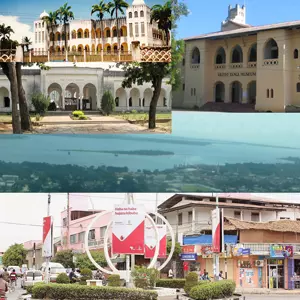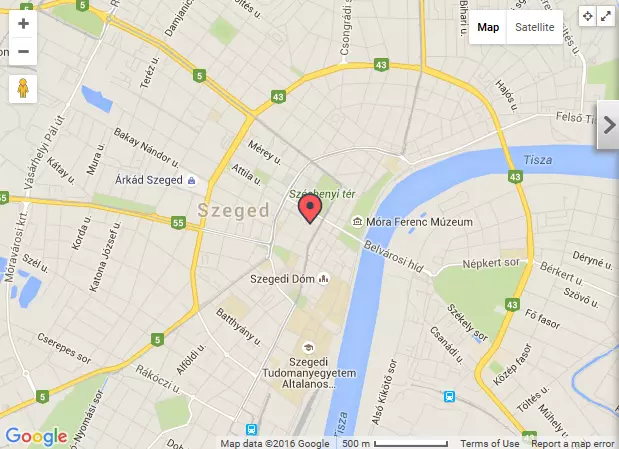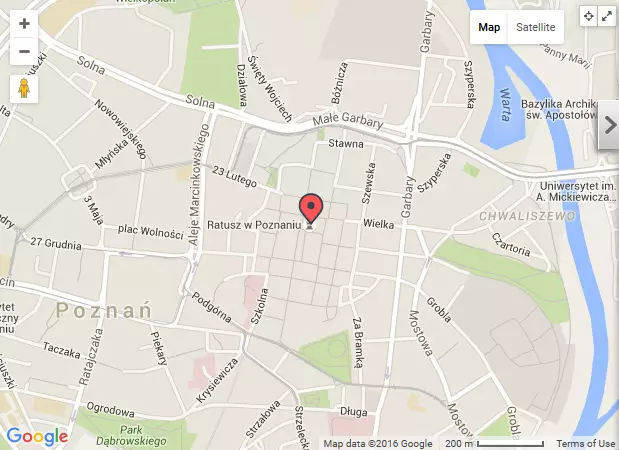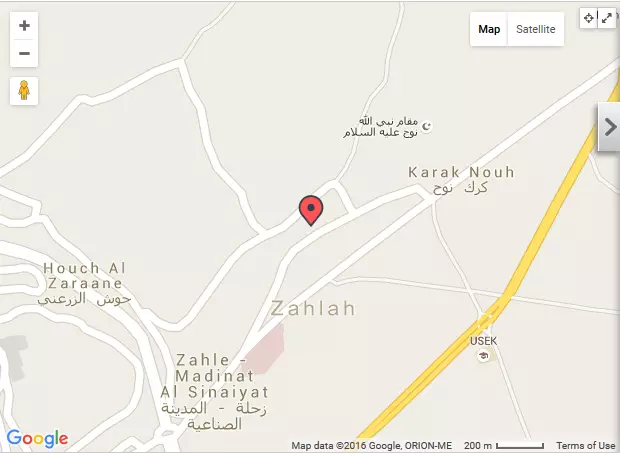« Toledo Sister City Digital Heritage: A Virtual Exhibition
 Toledo, Ohio
Toledo, Ohio
Use the index on the right to view information on a sister city.
 Map of Toledo, Ohio, USA
Map of Toledo, Ohio, USA
Wikipedia: "Toledo (/təˈliːdoʊ/) is the fourth most populous city in the U.S. state of Ohio after Cincinnati, Cleveland and Columbus, and it is the county seat of Lucas County.[7] Toledo is in Northwest Ohio, at the western end of Lake Erie, and borders the state of Michigan. The city was founded by United States citizens in 1833 on the west bank of the Maumee River, and originally incorporated as part of Monroe County, Michigan Territory. It was re-founded in 1837, after conclusion of the Toledo War, when it was incorporated in Ohio. [Wikipedia link]
Digital Collections: Archives, Libraries, and Museums in the Toledo/Northwest Ohio area
 Toledo, Ohio (image credit: Wikipedia, DLTE, CC BY-SA 3.0)
Toledo, Ohio (image credit: Wikipedia, DLTE, CC BY-SA 3.0)
- Bowling Green State University: Center for Archival Collections
- Images in Time - A collection of Historical Photographs of Toledo and Northwest Ohio.
- University of Toledo Libraries -- Digital Collections
- Ward M. Canaday Center: Manuscript Collections (digitized)
- Ward M. Canaday Center: University Archives
- Way Public Library, Perrysburg Ohio
Related Web Links
- East Toledo Historical Society (Facebook site)
- Historic Perrysburg
- Maumee Valley Historical Society: Wolcott Heritage Center
- Sylvania Historical Village
- Interested in suggesting relevant Web sites?
This email address is being protected from spambots. You need JavaScript enabled to view it. !
Toledo Sister Cities International: "Established in 1931, the Toledo, Ohio - Toledo, Spain connection is the oldest formally recognized sister-city relationship in the world. The cultural and historical connection, however, goes back to at least 1835..." [read more]
Wikipedia: "Toledo (Spanish: [toˈleðo]) is a municipality located in central Spain, 70 km south of Madrid. It is the capital of the province of Toledo and the autonomous community of Castile–La Mancha. It was declared a World Heritage Site by UNESCO in 1986 for its extensive cultural and monumental heritage and historical co-existence of Christian, Muslim and Jewish cultures. Toledo is known as the "Imperial City" for having been the main venue of the court of Charles I, and as the "City of the Three Cultures", having been influenced by a historical co-existence of Christians, Muslims and Jews. In 1085, the city fell to Alfonso VI of Castile as the first major city in the Christian Reconquista. Toledo has a history in the production of bladed weapons, which are now popular souvenirs of the city..." [Wikipedia link]
Digital Collections: Archives, Libraries, and Museums
 Toledo, Spain. Montage by Toledo's Attic
Toledo, Spain. Montage by Toledo's Attic
- Biblioteca Digital de Castilla-La Mancha (Digital Library of Castilla-La Mancha) - The Biblioteca de Castilla-La Mancha holds one of the most important heritage collections of Spain. Founded in the eighteenth century, the collection includes more than 100,000 manuscripts, incunabula and prints from the eleventh to the nineteenth centuries about Toledo and Spain. We have two main digital heritage collections: one, the Biblioteca Digital de Castilla-La Mancha (BIDICAM), that includes these rich collections preserved in our Library, and the other, the Virtual Exhibitions on our website.
- Biblioteca Regional de Castilla-La Mancha
- Archivo Histórico Provincial de Toledo
- Archivo Municipal de Toledo (Municipal Archives of Toledo)
- Museo del Greco Collections
- Museo del Ejército (Spanish Army Museum)
- Real Academia de Bellas Artes y Ciencias Históricas de Toledo
- Real Fundación de Toledo
Related Web Links
- Biblioteca Digital Hispánica
- Europeana Collection (Toledo)
- Hispana Digital Collections (search)
- University of Catilla-La Mancha Library: Spanish Digital Collections
- Interested in suggesting relevant Web sites?
This email address is being protected from spambots. You need JavaScript enabled to view it. !
Acknowledgments
Toledo's Attic would like to thank the following individuals for kindly assisting with this virtual exhibition:
- Carmen Morales Mateo, Deputy Director of Biblioteca de Castilla-La Mancha and Associate Professor of University of Castilla-La Mancha
- Rocío Tejero Notario, Biblioteca Nacional de España, Biblioteca Digital Hispánica
Wikipedia: "Londrina (Portuguese pronunciation: [lõˈdɾĩnɐ], literally Londonese) is a city located in the north of the state of Paraná, South Region, Brazil, and is 369 km away from the capital, Curitiba. Londrina was originally explored by British settlers, and then officially established in 1930 by a small group of Japanese and German settlers. It rapidly became the commercial, political, and cultural centre of the state’s northern pioneer zone.[1] The city exerts great influence on Paraná and Brazil's south region..."[Wikipedia link]
Londrina is not in an active sister-city relationship with Toledo, Ohio. [read more]
Digital Collections: Archives, Libraries, and Museums
 Londrina, Brazil.Montage by Toledo's Attic
Londrina, Brazil.Montage by Toledo's Attic
- Portal Domínio Público - National public digital library
- History of Londrina (História da Cidade): Historical photo collection
- Photos of Londrina Today
- Video: History of Londrina
Related Web Links
- Arquivo Nacional (searchable database)
- Prefeitura de Londrina: Bibliotecas - A listing of libraries in Londrina
- Museu Histórico pa Carlos Weiss
- Museu de Arte de Londrina
- We welcome exhibition visitors to submit relevant suggestions.
This email address is being protected from spambots. You need JavaScript enabled to view it. !
Toledo Sister Cities International: "Qinhuangdao is known as the Glass City of China and is a major port about a two-hour train ride from Beijing. As one of the most beautiful and pleasant Chinese cities near the Pacific Ocean, Qinhuangdao is also a popular vacation destination. Michael Cicak of Glasstech, Inc., worked closely with Mayor Donna Owens in 1985 to establish this sister city relationship....." [read more]
Wikipedia: "Qinhuangdao (/ˈtʃɪnˈhwɑːŋˈdaʊ/)[1] is a port city on the coast of China located in northeastern Hebei province. It is administratively a prefecture-level city, located about 300 km (190 mi) east of Beijing, on the Bohai Sea, the innermost gulf of the Yellow Sea. Its population during the 2010 national census was 2,987,605, with approximately one million people living in the built-up (or metro) area made up of 3 urban districts.." [Wikipedia link]
Digital Collections: Archives, Libraries, and Museums
 Qinhuangdao, China. Montage by Toledo's Attic
Qinhuangdao, China. Montage by Toledo's Attic
Related Web Links
- Beautiful China: Qinhuangdao
- China's "Loneliest" Library In Qinhuangdao (Getty Images)
- National Library of China
- Toledo's Attic visitors are invited to suggest Webpages
This email address is being protected from spambots. You need JavaScript enabled to view it.
Toledo Sister Cities International: "Szeged, in Csongrad County, is located on the Great Plain in southern Hungary. The Szeged-Toledo sister city relationship was established under the leadership Rev. Martin Hernady of St. Stephen’s Church and Ann Galloway, then vice-president of Sister Cities International. The sister city agreement was signed in October 1990. Founding members included Ann Galloway and Judy Balogh. State Representative Peter Ujvagi was also been instrumental in strengthening the relationship, having led trade delegations to Szeged and welcomed Hungarian leaders in Toledo. Additionally, a relationship was established between Lucas County and Csongrad County, Hungary, in 1996...." [read more]
Wikipedia: "Szeged (Hungarian pronunciation: [ˈsɛɡɛd] (![]() listen); see also other alternative names) is the third largest city of Hungary, the largest city and regional centre of the Southern Great Plain and the county seat of Csongrád county. The University of Szeged is one of the most distinguished universities in Hungary." [Wikipedia link]
listen); see also other alternative names) is the third largest city of Hungary, the largest city and regional centre of the Southern Great Plain and the county seat of Csongrád county. The University of Szeged is one of the most distinguished universities in Hungary." [Wikipedia link]
Digital Collections: Archives, Libraries, and Museums
 Szeged, Hungary. Montage by Toledo's Attic
Szeged, Hungary. Montage by Toledo's Attic
- Csongrád Megyei Levéltár Hódmezővásárhelyi Levéltára-Europeana (Archive of Csongrás County, Hódmezővásárhely Archive)
- Délmagyar.hu - Historic images
- Móra Ference Múzeum-Europeana (Szeged)
- Somogyi Library - Gallery of Library Photos
- Somogyi Library/eLibrary (digital collections)
- Szeged City Gallery
- University of Szeged, Digital Repositories
- Special Collections: Hadtörténeti Gyűjtemény (Military Collections)
- Virtual Szeged (in Hungarian only)
Related Web Links
- Nemzeti Széchenyi Könyvtár (National Széchenyi Library)
- EUROPEANA (Szeged)
- Magyar Digitális Képkönyvtár (Hungarian Digital Image Library)
- Pick Salami and Szeged Paprika Museum
- Szeged (Tourism information)
- Article: "Testvérvárosi villamosok Szegeden" ("Sister City Streetcars in Szeged")
- Toledo's Attic visitors are invited to suggest relevant Webpages
This email address is being protected from spambots. You need JavaScript enabled to view it.
Acknowledgments
Toledo's Attic would like to thank the helpful staff at the Somogyi Library (Somogyi Károly Városi és Megyei Könyvtár) for assistance with identifying important resource links.
Toledo Sister Cities International: "Poznan was the general departure point for most of Toledo’s immigrants from Poland. Encouraged by Congresswoman Marcy Kaptur, the Toledo-Poznan Alliance was established in 1990. In the spring of 1991 the respective mayors signed official documents in Toledo and Poznan. Poznan is located in one of the most commercially active regions of Central and Eastern Europe. As the home to year-round international trade fairs, Poznan represents a gateway to the emerging markets of Eastern Europe..." [read more]
Wikipedia: "Poznań ([ˈpɔznaɲ] (![]() listen); German: Posen, known also by other historical names) is a city on the Warta river in west-central Poland, in Greater Poland region. It is best known for its renaissance old town, destroyed during World War II and then rebuilt, and Ostrów Tumski cathedral. After the second partition of Poland Poznań was administrated by Prussia, and then, with the unification of Germany after the Franco-Prussian War of 1871, the province of Posen became part of the German Empire. Furthermore, the city of Posen was officially named an imperial residence city, leading to the construction of the Imperial Castle, the Imperial District, the Opera House, new city walls, railway station and many other sites which make a big part of its landmarks to this day. Today, Poznań is an important cultural and business centre and one of Poland's most populous regions with many regional customs such as Jarmark Świętojański, traditional Saint Martin's croissants and a local dialect. Poznań is among the oldest cities in Poland and was one of the most important centers in the early Polish state in the tenth and eleventh centuries. The first center city was Ostrów Tumski, the natural island on the Warta river-very similar to the Île de la Cité in Paris. The first rulers were buried in Poznań's cathedral on the island. It also served as the capital for a short time in the 13th century, hence the official name: The capital city of Poznan." [Wikipedia link]
listen); German: Posen, known also by other historical names) is a city on the Warta river in west-central Poland, in Greater Poland region. It is best known for its renaissance old town, destroyed during World War II and then rebuilt, and Ostrów Tumski cathedral. After the second partition of Poland Poznań was administrated by Prussia, and then, with the unification of Germany after the Franco-Prussian War of 1871, the province of Posen became part of the German Empire. Furthermore, the city of Posen was officially named an imperial residence city, leading to the construction of the Imperial Castle, the Imperial District, the Opera House, new city walls, railway station and many other sites which make a big part of its landmarks to this day. Today, Poznań is an important cultural and business centre and one of Poland's most populous regions with many regional customs such as Jarmark Świętojański, traditional Saint Martin's croissants and a local dialect. Poznań is among the oldest cities in Poland and was one of the most important centers in the early Polish state in the tenth and eleventh centuries. The first center city was Ostrów Tumski, the natural island on the Warta river-very similar to the Île de la Cité in Paris. The first rulers were buried in Poznań's cathedral on the island. It also served as the capital for a short time in the 13th century, hence the official name: The capital city of Poznan." [Wikipedia link]
Digital Collections: Archives, Libraries, and Museums
 Poznań, Poland. Montage by Toledo's Attic
Poznań, Poland. Montage by Toledo's Attic
- Archiwum Państwowe w Poznaniu (State Archives in Poznan): Collections online:
- Federacja Bibliotek Cyfrowych (Digital Libraries Federation)
- Muzeum Narodowe w Poznaniu (National Museum in Poznan)
- Wielkopolska Biblioteka Cyfrowa (Digital Library of Wielkopolska)
Related Web Links
- EUROPEANA (search results for "Poznan")
- Library of the Poznań Society of Friends of Sciences
- Raczynsky Library, Special Collections
- Toledo-Poznan Alliance
- Toledo's Attic visitors are invited to suggest Webpages
This email address is being protected from spambots. You need JavaScript enabled to view it.
Toledo Sister Cities International: "The Beqaa is a vast open valley nestled in-between Lebanon’s two mountain ranges. It has long been known as the bread basket of Lebanon and a corridor of civilizations. Since ancient times, the valley has been the source of the region’s agricultural heritage and a thoroughfare for commerce..." [read more]
Wikipedia: "The Beqaa Valley (Arabic: وادي البقاع, Wādī l-Biqā‘, Lebanese [bʔaːʕ]; Armenian: Բեքայի դաշտավայր), also transliterated as Bekaa, Biqâ, and Becaa and known in classical antiquity as Coele-Syria, is a fertile valley in eastern Lebanon. It is Lebanon's most important farming region.[1] Industry also flourishes in Beqaa, especially that related to agriculture. The Beqaa is located about 30 km (19 mi) east of Beirut. The valley is situated between Mount Lebanon to the west and Anti-Lebanon mountains to the east. It forms the northeasternmost extension of the Great Rift Valley, which stretches from Syria to the Red Sea. Beqaa Valley is about 120 kilometres (75 mi) in length and has an average width of about 16 kilometres (9.9 mi)." [Wikipedia link]
Digital Collections: Archives, Libraries, and Museums
 Beqaa Valley, Lebanon. Montage by Toledo's Attic
Beqaa Valley, Lebanon. Montage by Toledo's Attic
- Holy Spirit University of Kaslik (USEK) Library, Special Collections
- Islamic University of Lebanon (IUL), Libraries, Digital Collections
- World Digital Library: Baalbeq (search results)
Related Web Links
- Arabic and Middle Eastern Electronic Library (AMEEL, Yale University Library)
- Near East Collection (Yale University Library)
- Baalbek - UNESCO World Heritage Center
- Zahlé - UNESCO Creative Cities Network
- Toledo's Attic visitors are invited to suggest Webpages
This email address is being protected from spambots. You need JavaScript enabled to view it.
Toledo Sister Cities International: "The Toledo-Toyohashi Sister City relationship began in 1997 when Mrs. Justine Singer visited Toyohashi and became friends with Mr. and Mrs. Murata. In the fall of 1998, the Toyohashi Photo Club sent its first delegation to Toledo." [read more]
Wikipedia: "Toyohashi (豊橋市 Toyohashi-shi?) is a city located in Aichi Prefecture, Japan. As of March 2015, the city had an estimated population of 372,710 and a population density of 1420 persons per km². The total area was 261.86 square kilometres (101.10 sq mi). By area, Toyohashi was Aichi Prefecture's second-largest city until March 31, 2005 when it was surpassed by the city of Toyota, which had merged with six peripheral municipalities." [Wikipedia link]
Digital Collections: Archives, Libraries, and Museums
Related Web Links
 Toyohashi, Japan. Montage by Toledo's Attic
Toyohashi, Japan. Montage by Toledo's Attic
- National Archives of Japan
- Toledo's Attic visitors are invited to suggest Webpages
This email address is being protected from spambots. You need JavaScript enabled to view it.
Toledo Sister Cities International: "Tanga is located in east Africa. Like Toledo, Tanga is a seaport, and the population of the two cities is also about the same. In 1996, a group of citizens interested in promoting and cultivating international relations with a city in Africa met under the leadership of Virgina Haywood-Smith. From this interest, the African Sister Cities Committee of Toledo Sister Cities International was formed." [read more]
Wikipedia: "Tanga is both the name of the most northerly seaport city of Tanzania, and the surrounding Tanga Region. It is the Regional Headquarters of the region. With a population of 243,580 in 2002, Tanga is one of the largest cities in the country. It is a quiet city compared to, for example, Arusha or Moshi with a comparable number of inhabitants. The city of Tanga sits on the Indian Ocean, near the border with Kenya. Major exports from the port of Tanga include sisal, coffee, tea, and cotton. Tanga is also an important railroad terminus, connecting much of the northern Tanzanian interior with the sea. Via the Tanzania Railways Corporation's Link Line and Central Line, Tanga is linked to the African Great Lakes region and the Tanzanian economic capital of Dar es Salaam...[Wikipedia link]
Digital Collections: Archives, Libraries, and Museums
 Tanga, Tanzania. Montage by Toledo's Attic
Tanga, Tanzania. Montage by Toledo's Attic
Related Weblinks
- Tanga City Library
- Tanzania National Archives: Collection
- Urithi Tanga Museum - Facebook site
- Mamba Tour and Safari
- *Toledo's Attic visitors are invited to suggest Webpages
This email address is being protected from spambots. You need JavaScript enabled to view it.
Toledo Sister Cities International: "As an extension of the educational component of TSCI’s mission, The Toledo-Delmenhorst Committee began a series of presentations on October 20, 2011 at Oak Shade Grove in Oregon, OH. Marking the 150th anniversary of the beginning of the Civil War, David Kohler gave a presentation on German Troops in the Civil War. Mr. Kohler included family narrative, as well as other historical documentation on the subject. ." [read more]
Wikipedia: "Delmenhorst (German pronunciation: [ˈdɛlmənhɔʁst]) is an urban district (Kreisfreie Stadt) in Lower Saxony, Germany. It has a population of 74,500 and is located 10 kilometres (6 miles) west of downtown Bremen with which it forms a contiguous urban area, whereas the city of Oldenburg is 25 kilometres (16 miles) to the northwest. The city has a total area of 62.36 square kilometres (24.08 square miles); and a population density of approx. 1200 inhabitants per km²." [Wikipedia link]
Digital Collections: Archives, Libraries, and Museums
 Delmenhorst, Germany. Montage by Toledo's Attic
Delmenhorst, Germany. Montage by Toledo's Attic
- Bayerische StaatsBibliothek Digital (search results, Delmenhorst)
- Bildarchiv Foto Marburg: Bildindex (search the digital image library)
- Deutsche Fotothek (search results, Delmenhorst)
- DigiBib - Digital Library
- EUROPEANA (Delmenhorst, search results)
- Museen Nord - Digital Library (Delmenhorst, search results)
- Münchener DigitalisierungsZentrum, Digitale Bibliothek (Munich Digitization Center)
- Stadtbibliothek Bremen
- Stadtbücherei Delmenhorst
- Stadtarchiv Delmenhorst
Related Web Links
- Hochschulbibliothekszentrum
- Nordwolle - Industrial heritage museum
- Städtische Galerie Haus Coburg, Delmenhorst
- Toledo's Attic visitors are invited to suggest Webpages
This email address is being protected from spambots. You need JavaScript enabled to view it.
Toledo Sister Cities International: "In 2009, the City of Coimbatore established an international sister city relationship with the City of Toledo, to foster friendship between citizens and cultivate international cooperation. This effort was led by Dr. Subba Rao and Dr. Ragu-Nathan. Mr. Ram Ramanujam heads the Cultural Committee. Coimbatore, known as the Manchester of South India, is home to a large number of textile mills, textile machinery manufacturers, hosiery units and engineering industries.." [read more]
Wikipedia: "Coimbatore, also known as Kovai [koːʋəj], is a major city in the Indian state of Tamil Nadu. It is the second largest city and urban agglomeration in the state after Chennai[9] and the sixteenth largest urban agglomeration in India. It is administered by the Coimbatore Municipal Corporation and is the administrative capital of Coimbatore district. It is one of the fastest growing tier-II cities in India and a major textile, industrial, commercial, educational, information technology, healthcare and manufacturing hub of Tamil Nadu.[10] It is often referred to as the "Manchester of South India" due to its cotton production and textile industries.[11][12] Coimbatore is also referred to as "Pump City" and it supplies two thirds of India's requirements of motors and pumps. The city is one of the largest exporters of jewellery, wet grinders, poultry and auto components and the term "Coimbatore Wet Grinder" has been given a Geographical indication.[13][14][15] The city is located on the banks of Noyyal river surrounded by the Western Ghats." [Wikipedia link]
Digital Collections: Archives, Libraries, and Museums
 Coimbatore, India. Montage by Toledo's Attic
Coimbatore, India. Montage by Toledo's Attic
- Coimbatore Heritage
- Digital Library of India: Coimbatore,History (search results)
- History of Coimbatore
Related Web Links
- Arsha Vidya Gurukulam: Digital Library
- Coimbatore: Tamil Nadu Government
- Coimbatore Online - City Guide
- Digital Library of India
- UNESCO World Heritage: Mountain Railways of India
- Toledo's Attic visitors are invited to suggest Webpages
This email address is being protected from spambots. You need JavaScript enabled to view it.
Toledo Sister Cities International: "Hyderabad is one of the oldest cities of the Indian sub-continent and lies just east of the River Indus. It is an important commercial and industrial center, with a history also of silk production and gold work. It is also well-known as the city that makes the decorative glass bangles so popular in South Asia...In 2011, the city of Hyderabad established an international sister city relationship with the city of Toledo to bring business, cultural, and educational benefits to each city..." [read more]
Wikipedia: "Hyderabad (Sindhi: حيدرآباد, Urdu: حيدرآباد ) is a city located in the Sindh province of Pakistan. Hyderabad is the 4th largest city in Pakistan and 2nd largest in province of Sindh..." [Wikipedia link]
Digital Collections: Archives, Libraries, and Museums
 Hyderabad, Pakistan. Montage by Toledo's Attic
Hyderabad, Pakistan. Montage by Toledo's Attic
Related Web Links
- The Citizens Archive of Pakistan
- Digital Preservation of Pakistan's Heritage
- Hasrat Mohani District Central Library (Facebook site)
- National Fund for Cultural Heritage: Cultural Heritage of Pakistan
- Sindh Archives: Collections
- World Public Library: Hyderabad, Pakistan
- Toledo's Attic visitors are invited to suggest Webpages
This email address is being protected from spambots. You need JavaScript enabled to view it.











